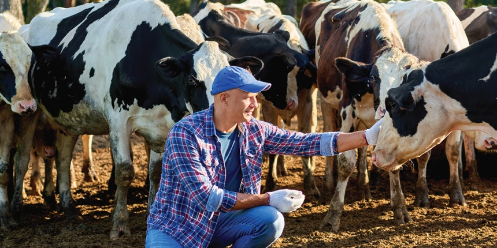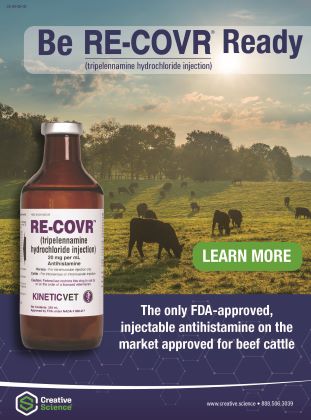RMS Continues to Gain Momentum

Article courtesy of Marcia Endres and Jim Salfer. Extension Dairy Educators, University of Minneosta Extension Services
Dairy producers choose to install RMS for various reasons, but surveys have shown that one of the most common reasons relates to labor (flexibility may be more than labor cost) and lifestyle or quality of life for herd owners and their employees.
Feeding management is a key to success in RMS
Our surveys indicate that dairy producers rank feeding management as the number one factor leading to successful results with RMS.
When we feed cows in RMS, we need to consider the partial mixed ration (PMR) delivered in the feed bunk and balance that ration with the concentrated pellet fed in the robot box. This balance can be challenging! A palatable feed offered in the RMS milking station is the main motivating factor for cows to visit the RMS. More farms are now feeding more than one type of concentrate pellet in the robot box, maybe a high-production pellet for their earlier lactation cows and a late lactation pellet that is less expensive.
We learned that in free cow traffic flow farms (where cows have continuous access to feed bunk, resting, and RMS box), the PMR was balanced for 15 to 30 pounds less than the herd’s bulk tank average production. In contrast, in guided flow farms (where the cows are guided by pre-selection, one-way gates into the RMS box area), the PMR was balanced for 8 to 15 pounds less than the average.
Forage quality and consistent dry matter in the PMR are really important. Nutritionists in our survey indicated that the palatability of the pellet and consistent PMR mixing were the two biggest feeding factors contributing to RMS success. Consistency is the key! Farms that achieve consistently high production have the following attributes:
• Consistent PMR dry matter
• Consistent mixing and delivery of the PMR
• Consistent feed push-ups
• Consistent and frequent cow fetching
• Consistently high visits by fresh cows
• Highly palatable PMR
• Highly palatable, consistent, high-quality milking station feed
Milk quality can be a challenge if RMS is not managed properly
There are some clear advantages to milking cows with robots and some challenges to maintaining udder health.
One of the advantages of RMS is that quarters are individually milked and detached, which reduces overmilking. This can help improve teat-end health. There is also less risk of antibiotic contamination with a treated cow, as long as her ID is entered in the computer so the milk is discarded.
However, a current challenge with RMS (depending on the system) is teat prepping and post-dipping. A European study found that only 67% of the cleanings were technically successful, i.e., all 4 teats were brushed. However, over 95% of the teat cleanings in the best-performing farm were technically successful. The reasons for most of the failed teat cleanings were undetermined. Still, of the known causes, a device failure in one herd and the restless behavior of the cows in several herds were associated with most of the unsuccessful teat cleanings. In contrast, abnormal udder and teat structure were associated with most partly unsuccessful teat cleanings.
Another challenge relates to the identification of clinical mastitis cases. Although additional metrics have improved detection recently, a few cows might still be missed. Contagious organisms can be a real challenge. Implementing regular bulk tank milk cultures will help reduce udder health problems. If contagious organisms are present in the herd, some special add-on equipment (e.g., steam cleaners) may help.
What are some steps that can help reduce udder health problems?
1. Getting cows to visit the RMS milking station regularly is important. If cows have a very long milking interval, milk leaking greatly increases, and these cows are at higher risk for mastitis.
2. Keeping the barn and stalls clean is very critical. The RMS cannot distinguish between dirty and clean udders; therefore, cows must enter the RMS unit with a lower bacteria load.
3. Cleanliness of milking units, robots, and the area around the robot is also critical.
4. It is also important to fine-tune RMS settings for optimum performance on a routine basis and optimize/adjust the machine for the barn and bedding type. Default values might not be adequate. Working with service providers helps in this process.
Other items to keep in mind are adjusting the pre-stimulation time (to result in rapid milk let down) and teat drying time, plus adjusting for the breed, size of teat, and shape of the udder. A system to find failed cows rapidly should be developed. Research shows cows/quarters with incomplete milking are more susceptible to infection.
The knowledge about RMS continues to grow in North America, and producers’ satisfaction with the system has improved in recent years. It takes a team approach, including producers, service providers, nutritionists, veterinarians, and other advisors to optimize RMS utilization best.




